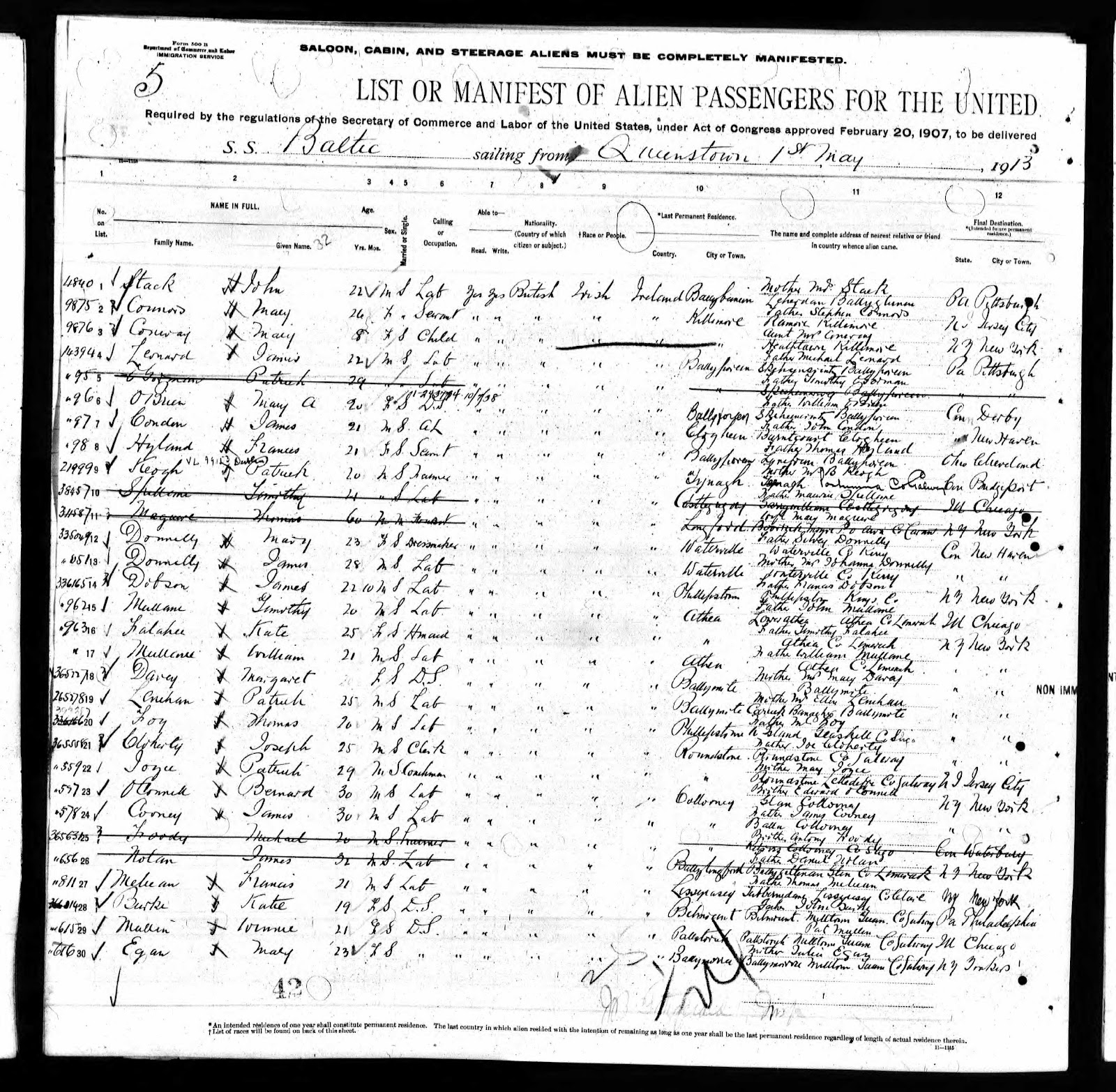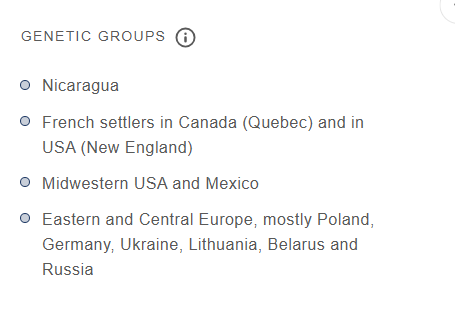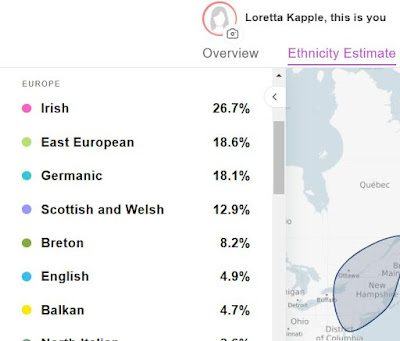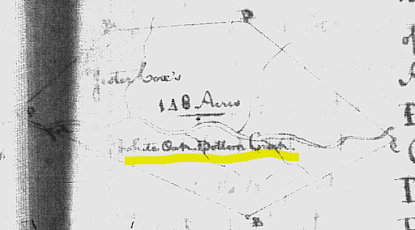Winifred Mullen Found!
For years, my Great-Great Aunt Winifred Mullen was just a name in old Irish census records—born around 1892, living in Ireland in 1901 and 1911. I assumed she had stayed there her whole life, unlike her siblings—my great-grandmother Helen Mullen-Mason, her sister Bridget (who became Sister Mary Kathleen), and their brother Thomas—who all immigrated to Chicago (their brother Michael Mullen remained in Ireland until his death).
But Winifred had a secret: she, too, had crossed the Atlantic.
The Ellis Island Breakthrough
After years of searching Irish records for a marriage or death certificate, I finally found her—on a passenger list. In 1913, she arrived at Ellis Island, her name misspelled so badly that previous searches had missed her. Like her siblings, she was headed to Chicago.
But then… she vanished again.
The Chicago Clue
Frustrated, I turned to Ancestry family trees—usually a last resort due to unsourced information—and there she was: Winifred Mullen, married to Henry Chapman in Chicago in 1929. No parents listed, but the details fit (but her married name, Chapman, led me to find more records):
By 1930, they were living on Mackinac Island, Michigan.
The 1930 Census gave her year of immigration as 1913 (oddly her marriage record didn't come up in the searches until I included the name Chapman)
They had a son, Patrick Henry Chapman, born in 1931
And then I remembered something my father had mentioned decades ago…
The Little Boy from Mackinac Island
My father, born in 1933, once recalled a childhood visit from a young relative—a quiet boy from Mackinac Island, around his age. The boy, he said, was Native American, which made him wonder if we had Indigenous ancestry.
The family thought the boy hadn’t enjoyed his visit—until they heard he couldn’t stop talking about it when he got home.
Now, the pieces fell into place: That boy was Patrick Chapman, Winifred’s son.
The Métis Connection
Further research revealed that Henry Chapman’s family had Métis roots—descendants of French-Canadian fur traders and Ojibwe women on Mackinac Island. Patrick, as a tribal member, carried that heritage.
But our link to him wasn’t through his father—it was through his Irish mother, my long-lost aunt.
A Bittersweet Discovery
Winifred died of breast cancer in her 50s. Patrick passed in 2002, and his only daughter is also gone. I’ll never hear his memories of visiting Chicago or what he thought of my father’s family.
But this journey taught me something: Family stories hold hidden truths. A passing comment about a "Native American cousin" led me to an entire branch of my family tree—one that tied Ireland, Chicago, and Mackinac Island together.
If you’ve ever hit a brick wall in genealogy, don’t give up. Sometimes the answer lies in:
Misspelled names (check every variation!)
Unexpected locations (who knew Winifred went to Mackinac Island?)
Family stories (even vague ones can hold clues)
Indexing and Transcription Errors (errors in indexing can affect search results)
And if you have ties to the Chapman family of Mackinac Island, I’d love to hear from you. There are still more stories to uncover, and photos.


































.JPG)











